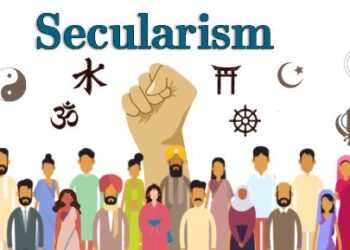The real spirit behind women’s reservation bill has to be reflected only through due provisions of reservation for women belonging to the scheduled castes, the scheduled tribes and other backward classes.
Once again Women’s Reservation Bill is said to be under consideration by BJP union government as a part of its rhetoric political move of women centric slogan, Protect Girl child, Educate Girl child (Beti Bachao, Beti Padhao). It seems the leadership of BJP is keen to prepare for the Lok Sabha election in 2019. The bill provides for reservation of 33 per cent of all seats for women in the Lok Sabha and the State legislative assemblies including the seats reserved for the scheduled castes and the scheduled tribes.
The Bill was introduced first in 1996 by the Congress government which lapsed thrice with the dissolution of the respective Lok Sabhas. When Rajiv Gandhi was the Prime Minister, the reservation of 33 per cent was introduced for women in local bodies viz. municipal corporations, municipalities, town and village panchayats for the election of their representatives. Even though such reservation for women has got constitutional sanctity through its 73rd Amendment, many States are yet to implement it solely because of male chauvinism, irrespective of the political parties ruling the States with a few exceptions.
Now the BJP Government taking up the task, for whatever cause, is welcome. They have to overcome the saffronised mind-set.
The basic tenets of Social Justice remain in the representation of the people to the positions for which they were denied entry and such representation must be in proportion to the numerical strength of respective marginalised population viz. communal representation. After 70 years of Independence and even prior to that, having got commenced from the British period, the core meaning of reservation policy is not fully comprehended by the aggrieved sections and is deliberately misunderstood by the aggressive and historically privileged sections. The ceiling in total reservation, though started as judicial observation (obiter dictum) was transformed as judicial verdict, detrimental to the tenet of social justice.
Such misunderstood features were available in the women’s reservation bills, brought earlier in the Parliament. Though nearly 50 per cent of the total population are women, only 33 per cent reservation is being proposed which is inadequate. Even in 33 per cent, general application of it irrespective of their respective caste identity was proposed. Through the passing of such Bill, only women of upper castes would be benefitted. Whatever reservations, so far available to the male members of the marginalised sections would be swallowed by the upper caste women, keeping the representation of the oppressed sections under peril and denial of the statutory rights available to the marginalised sections in toto. This sort of approach is marching towards the progressive goal of equality and equal opportunities by wearing the conservative and retrograde mask.
Though all women are subjugated socially, the degree of subjugation is not in equal dimension but varied according to the social hierarchy, prevailing in the society.
The real spirit behind women’s reservation bill has to be reflected only through due provisions of reservation for women belonging to the scheduled castes, the scheduled tribes and other backward classes.
Reform at the beginning itself is easier at its implementation. May it be expected that the BJP rulers with brutal majority in the Parliament to perform the easy job in a situation where they face tough criticism on its faulty policies on economic and cultural fronts?








